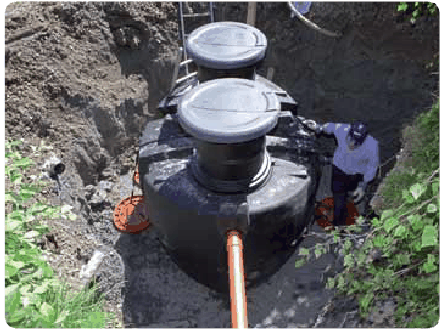Your cart is currently empty!
All about sludge separators

The most common sludge separator is the three-chamber well, which consists of three chambers. Nowadays, there are sludge separators designed in other ways without any chambers.
In the sludge separator, coarse particles are trapped in the wastewater so that subsequent treatment steps do not clog. As the pollutants are largely dissolved in the wastewater, the separation of coarse particles means that only a very small part of the pollutants is removed in the sludge separator.
The size of the sludge separator needed for your sewage depends on the number of people connected to it, the type of wastewater going to the sludge separator and also the treatment method to be used for the wastewater. Normally, a volume of about 2 m3 per household is needed for mixed wastewater. If the sludge separator is to receive only BDT water, about 1m3 is sufficient.
If chemical precipitation takes place in the sludge separator, the volume must be increased to at least 3-4m3 per household.
The sludge separator shall be positioned so that it is accessible to sludge suction vehicles.
Operation and maintenance
In order for the sludge separator to function properly, it is important that sludge is emptied often enough. Sludge is often emptied automatically by the municipality once a year. The sludge separator should be inspected from time to time:
Check that there is only floating sludge in the first chamber. If there is floating sludge in the other chambers, something is wrong. It may need to be emptied more often. If there is a noticeable smell from the sludge separator, the ventilation is probably not working properly. Check that the ventilation pipe connections have a clear opening.
Keep in mind that:
* After sludge emptying, the sludge separator must be filled with water, so as not to risk sludge overflowing to the next chamber when the level slowly rises. This is sometimes done by the sludge truck, sometimes not.
* A larger sludge separator than the recommended 2 m3 for a household (preferably 3 or 4 m3) provides a safer separation, and thus a longer life of infiltration.
If you do not have the possibility of sludge emptying or want to save money and meet the new recycling targets, you can use Aquatron as a sludge separator and a BDT sludge separator.
